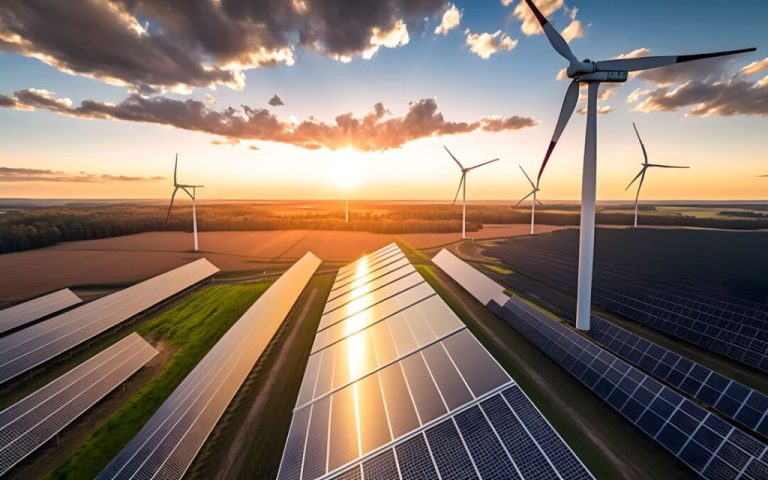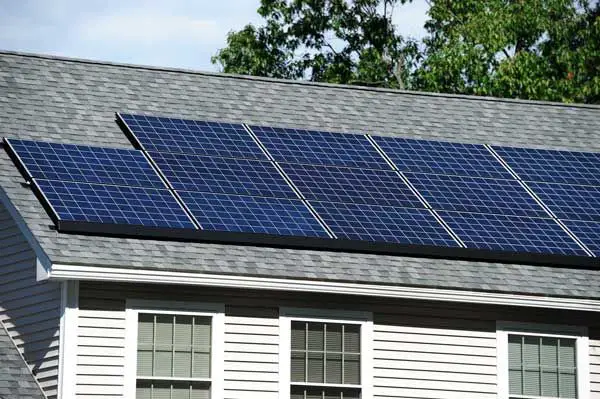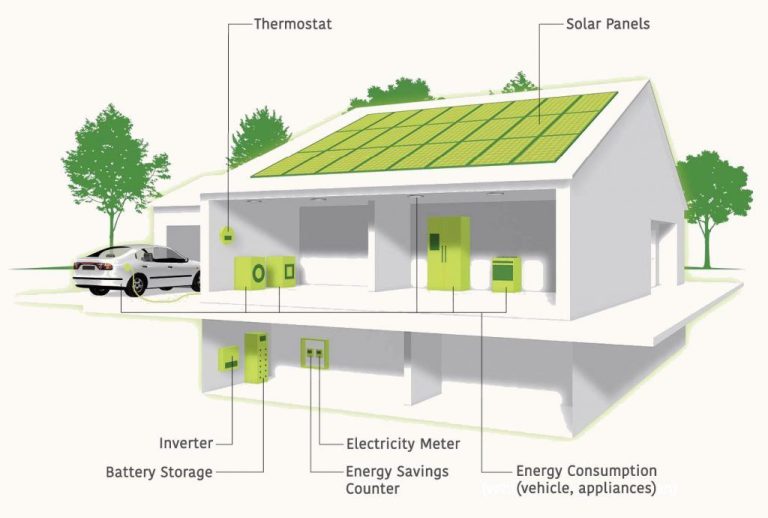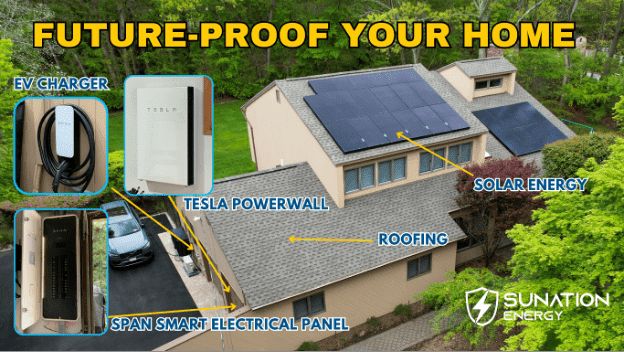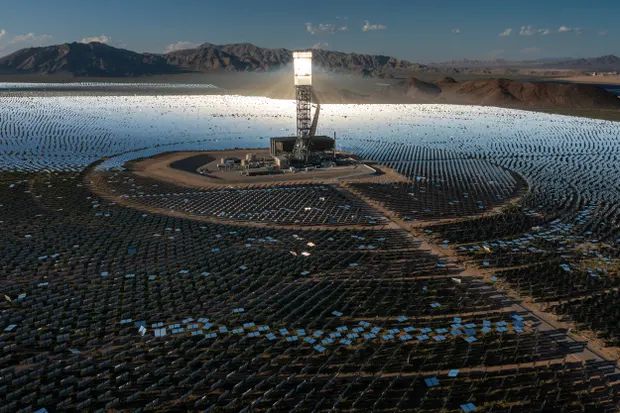What Is A Device Used To Collect Solar Energy?
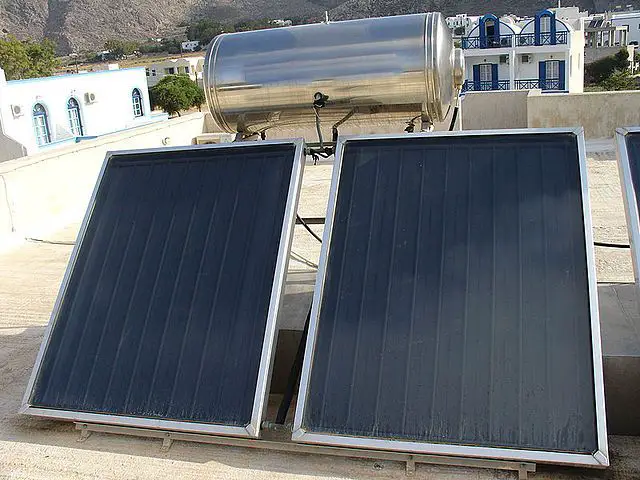
Solar energy collecting devices are technologies used to harness the sun’s energy for electricity or heat production. They convert sunlight into usable forms of energy. The main purpose of solar collectors is to harvest solar radiation and convert it into thermal or electrical energy that can then be used for various applications.
There are two primary types of solar energy collecting devices: photovoltaic panels (PV) that convert sunlight directly into electricity, and solar thermal collectors that heat up a liquid or air medium to produce hot water or air. PV panels use semiconducting materials to generate an electric current when exposed to sunlight. Solar thermal collectors use materials that readily absorb heat from the sun’s rays. Common examples include flat-plate collectors used for solar water heating, evacuated tube collectors, parabolic troughs, solar towers, and solar furnaces.
Key benefits of solar collecting devices are their renewable, clean energy generation and reduced carbon emissions compared to fossil fuels. As solar technology continues to advance and costs decrease, solar collectors are becoming more widespread in homes and industry.
History
The concept of using the sun’s energy dates back thousands of years, but the first functional solar device was likely invented in the 19th century. In 1839, French physicist Edmond Becquerel discovered the photovoltaic effect while experimenting with metal electrodes in electrolyte solutions. This discovery showed that certain materials can produce small amounts of electricity when exposed to light. Over the decades that followed, inventors filed patents for solar-powered devices, improving on Becquerel’s early experiments.
In 1883, American inventor Charles Fritts created the first working solar cell made of selenium coated with thin layer of gold. Fritts’ solar cells had less than 1% efficiency but demonstrated the potential of solar photovoltaics. In 1954, researchers at Bell Laboratories accidently discovered that silicon could also produce electricity when exposed to sunlight. This led to the production of the first practical solar cells with 6% efficiency.
Advancements in materials science, manufacturing techniques, and economies of scale have driven rapid improvements ever since. In the 1970s, Exxon researcher Elliot Berman dramatically reduced the cost of solar cells, helping inaugurate the modern solar PV industry. Today’s solar panels now achieve over 20% efficiency and costs have fallen more than 99% in the last 40 years.
How They Work
Solar energy collectors, also known as solar panels, convert sunlight into electricity using the photovoltaic effect. When sunlight hits the semiconducting materials in solar cells, the photons from the sunlight knock electrons loose, allowing them to flow and produce an electric current. The most common semiconducting material used is silicon.
Concentrated solar power (CSP) systems use mirrors or lenses to concentrate a large area of sunlight onto a small area. The concentrated heat is then used as a heat source for a conventional power plant. This thermal energy can be stored and used to produce electricity when the sun is not shining.
Solar thermal collectors, such as solar water heaters, use solar energy to heat water or another liquid. These collectors have a dark absorber material that absorbs sunlight and converts it to heat. The heat is transferred to the liquid passing through the collector.
References:
[1] https://www.energy.gov/eere/solar/how-does-solar-work
[2] https://www.arrow.com/en/research-and-events/articles/5-methods-of-harvesting-solar-energy
Types
There are several different types of devices used to collect solar energy:
Solar panels – Also known as photovoltaic (PV) panels, solar panels convert sunlight directly into electricity through the photovoltaic effect. They are made up of many individual solar cells, which are typically made of silicon. Solar panels come in different efficiencies and can be mounted on rooftops or ground-mounted arrays.
Solar thermal collectors – These devices absorb heat from the sun and transfer it to a fluid (usually water or air). The heated fluid can then be used to provide hot water, space heating, or to generate electricity through a heat engine. Common types of solar thermal collectors include flat plates, evacuated tubes, and parabolic troughs.
Solar furnaces – Solar furnaces concentrate sunlight using mirrors to achieve extremely high temperatures, which can be used for high-temperature material processing. The largest solar furnace is located in Odeillo, France and can reach temperatures above 3,000°C.
Concentrated solar power (CSP) systems – CSP uses mirrors or lenses to concentrate a large area of sunlight onto a small area to produce heat and electricity. Types of CSP include parabolic troughs, solar power towers, parabolic dishes and linear Fresnel reflectors.
Solar cookers – Various types of solar cookers, ovens, and pasteurizers use sunlight as a source of heat for cooking, baking, and food or water sterilization.
Other devices that use solar thermal energy include solar chimneys and solar stills.
Applications
Solar energy harvesting devices have many applications in homes, businesses, utilities, and even space. In the residential sector, solar panels on rooftops are commonly used to generate electricity and heat water. Solar water heating systems reduce the need for electricity or gas to heat water (Source). Another application is using passive solar design to naturally heat and cool homes.
For businesses, large solar panel systems can offset a significant portion of electricity usage. Solar panels are also increasingly used to power equipment in remote locations, like telecommunications infrastructure and oil & gas operations (Source). Utility-scale solar power plants generate renewable electricity at scale to feed into the grid.
Solar energy technologies are used to power satellites and spacecraft. Solar panels on spacecraft convert sunlight into electricity to operate systems and scientific instruments. Solar sails use radiation pressure from the sun as a means of spacecraft propulsion (Source).
Benefits
Some of the key benefits of solar energy are that it provides clean renewable energy, reduces reliance on fossil fuels, and can lead to cost savings over time (Enel Green Power). Solar energy is an abundant renewable resource that does not directly emit greenhouse gases or toxic pollutants (Constellation). Using the sun’s energy to generate electricity is an environmentally-friendly alternative compared to using fossil fuels like oil and coal (Solaires). Solar energy could help combat global climate change caused by carbon emissions from burning fossil fuels for electricity (Enel Green Power, https://www.enelgreenpower.com/learning-hub/renewable-energies/solar-energy/advantages-solar-energy).
Solar energy allows individuals and businesses to become more energy independent by generating their own electricity on-site (Constellation). This reduces the need to purchase electricity from utility companies and lessens the strain on the electrical grid (Constellation). Generating solar electricity at the point of consumption also eliminates energy losses from transmission over power lines (Constellation, https://www.constellation.com/energy-101/energy-innovation/solar-energy-pros-and-cons.html).
The cost of solar panel systems has dropped dramatically in recent years, making solar energy more affordable and accessible (Solaires, https://www.solaires.net/blog/blog_post/solar_energy_harvesting_technology/). Although there are upfront installation costs, solar panels can save money over the long-term by eliminating or reducing electricity bills (Constellation). The return on investment depends on system size, electricity rates, and financial incentives, but solar power is an economically viable option for many homeowners and businesses looking to cut energy costs (Enel Green Power).
Limitations
While solar energy has many benefits, it also comes with some limitations that should be considered. One of the main drawbacks is intermittency. Solar panels only produce energy when the sun is shining, so they do not generate power at night or on cloudy days. This can make solar unreliable as an energy source unless paired with energy storage solutions.
Speaking of storage, the high costs of energy storage present another challenge for solar power. Batteries and other storage technologies are still expensive. Without affordable storage, excess solar electricity often goes to waste instead of being stored for use when sunlight is unavailable.
Solar panels also involve very high upfront costs for purchase and installation. Although ongoing costs are low, the initial investment to install a solar system is very high compared to other energy sources. This can make adoption cost prohibitive for many homes and businesses.
Latest Innovations
The field of solar technology is rapidly advancing with new innovations that aim to improve efficiency and expand applications. Some of the latest developments include:
New materials like perovskites that can be printed cheaply and enable high efficiencies. Perovskite solar cells reached over 25% efficiency in lab settings, nearing the 26.7% record for silicon cells (Source).
Advancements in thin-film and organic solar cells that are lightweight and flexible for integrating solar technology into more products. Thin flexible solar films and solar paint allow solar cells to cover irregularly shaped surfaces (Source).
Innovations in solar textiles through knitting solar fibers into fabrics for wearable solar energy harvesting. Companies like SolarTextile are developing solar powered backpacks, tents, and more (Source).
Floating solar farms that float on bodies of water, helping to conserve land resources while improving solar panel efficiency through natural cooling. China recently activated the world’s largest floating solar farm, with a capacity of 320 megawatts (Source).
Future Outlook
The future looks bright for solar energy collecting devices like photovoltaic panels. With climate change driving the need for clean energy, governments around the world are implementing policies to accelerate the adoption of solar power. According to an MIT study, solar could potentially supply up to 69% of electricity demand globally by 2050 (https://energy.mit.edu/research/future-solar-energy/).
The solar industry is projected to see tremendous growth in the coming decades. Annual installations of solar PV are forecast to rise above 3 TW per year in order to meet climate goals, up from around 150 GW in 2020 (https://www.nature.com/articles/d41586-023-03714-y). New use cases for solar harvesting devices are also emerging, like solar roads, solar windows, and solar roof tiles.
Advancements in technology will drive increased efficiency and lowered costs. Companies are developing new high-efficiency solar cell designs, smarter tracking systems using AI, and improved energy storage solutions to enable growth. With supportive government policies and innovative new products, the future is bright for harvesting the unlimited potential of solar energy.
Conclusion
In conclusion, solar collecting devices such as solar panels and solar concentrators play an important role in harnessing renewable energy from the sun. As we face growing energy needs and aim to reduce our dependence on fossil fuels, solar collection technologies allow us to tap into the unlimited power of the sun. Solar energy holds great promise as a clean, sustainable energy source that can be captured and converted through photovoltaics, concentrated solar power, and other ingenious technical methods.
While solar collecting devices have limitations like high costs and intermittency, innovations and improved efficiency are making solar energy more viable and cost-competitive. With sufficient research, investment, and policy support, solar collectors can become a mainstream energy solution that provides clean power across the globe. By taking advantage of the free, abundant sunlight that reaches the Earth, solar collectors offer an invaluable pathway to securing our energy future while reducing environmental impacts. The development and deployment of innovative solar collecting technologies will be crucial as we transition toward a more sustainable energy system worldwide.

